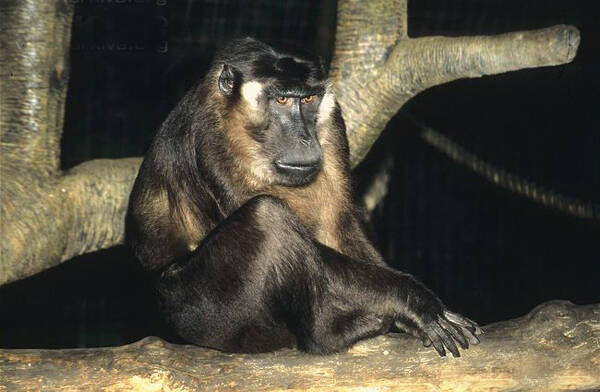Macaca siberu
IUCN
LCBasic Information
Scientific classification
- name:Macaca siberu
- Scientific Name:Macaca siberu,Siberut Macaque
- Outline:Primates
- Family:M.family M.sapiens
Vital signs
- length:47-48cm
- Weight:About 9.1kg
- lifetime:No verification information
Feature
Named after the place where it is distributed
Distribution and Habitat
Distributed in Siberut Island, Mentawai Islands, west of Sumatra, Indonesia. Siberut Island macaques have strong adaptability and their traces can be found in grasslands, forests and swamps on Siberut Island.
Appearance
The Siberu macaque is a medium-sized monkey, about 47-48 cm in length; tail length is about 6.5 - 8 cm; weight is 9.1 kg. The Siberu macaque is darker in color than its close relative, the Mentawai macaque, indicating a genetic difference. Like other macaques, the Siberu macaque is rather stocky and has a very short tail. Males are generally larger than females. The Siberu macaque has mostly black fur, with brown fur on the sides of the upper body. There are silver tufts of hair on the ends of the cheeks, and the throat and abdomen are light gray or brownish white. This species has black skin on the palms, face, and soles of the feet, and has a very short beard less than one centimeter in length. The tail grows only near the base, is hooked, and grows forward.
Siberu macaque babies are born with white fur, with reddish skin on the face, hands, and feet. Their fur changes to the color of the adult monkey after a few weeks.
Details
The scientific name of the Siberut Macaque is Macaca siberu, and its foreign name is Siberut Macaque. It is a species endemic to Siberut Island in the Mentawai Islands west of Sumatra, Indonesia.

The Siberut Island macaques mainly feed on leaves, twigs, wild vegetables, etc., and occasionally prey on other small animals. Like other monkeys, the Siberut Island macaques like to live in groups, often divided into groups ranging from more than ten to hundreds of individuals.
At present, the macaques on Siberut Island are relatively rare, mainly due to human hunting and habitat reduction.
Listed in the "World Conservation Union" (IUCN) ver: 2008 Red List of Primates - Vulnerable (VU).
Protect wild animals and eliminate game.
Maintaining ecological balance is everyone's responsibility!








